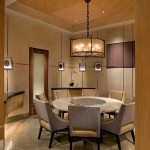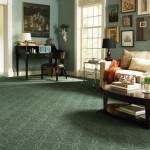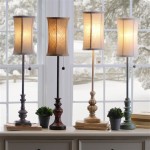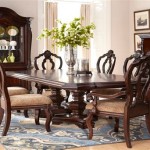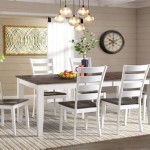Formal Dining Room Centerpiece Ideas
The formal dining room serves as a dedicated space for hosting dinners, celebrations, and other special occasions. The centerpiece, positioned at the heart of the dining table, plays a crucial role in establishing the room's aesthetic and contributing to the overall dining experience. Selecting the appropriate centerpiece requires careful consideration of various factors, including the room's existing decor, the table's size and shape, and the intended ambiance of the event. This article explores a variety of centerpiece ideas suitable for formal dining rooms, focusing on elements that enhance elegance and sophistication.
Floral Arrangements: A Classic Choice
Floral arrangements represent a timeless and sophisticated centerpiece option for formal dining rooms. Their inherent beauty and versatility allow for customization to suit various styles and preferences. The selection of flowers, vase, and arrangement style all contribute to the overall impact. Roses, lilies, orchids, and hydrangeas are popular choices for formal settings due to their elegant appearance and perceived refinement. Arrangements can range from simple, understated designs to elaborate, multi-tiered displays.
When selecting flowers, consider the color palette of the dining room. Complementary colors can enhance the room's existing decor, while contrasting colors can create a focal point. The size of the arrangement should be proportionate to the table; an overly large arrangement can obstruct views and hinder conversation, while a too-small arrangement may appear insignificant. Tall, slender vases are well-suited for creating dramatic height, while low, wide bowls provide a more grounded and intimate feel.
Beyond fresh flowers, consider the use of dried or preserved floral arrangements. These options offer longevity and require less maintenance. Dried hydrangeas, pampas grass, and preserved roses can create stunning, long-lasting displays. Furthermore, incorporating elements like branches, berries, and feathers can add texture and visual interest to floral arrangements.
The style of the arrangement should align with the overall aesthetic of the dining room. Traditional arrangements often feature symmetrical designs and formal flower types, while contemporary arrangements may incorporate asymmetrical shapes and more unconventional flower choices. Consider the arrangement's form to ensure it complements the table's dimensions and the room's existing elements.
Candle Displays: Illuminating Elegance
Candles introduce warmth, ambiance, and a sense of intimacy to a formal dining room. A well-designed candle display can serve as a captivating centerpiece, enhancing the dining experience with soft, flattering light. Candles can be incorporated in various ways, from simple groupings of pillar candles to elaborate candelabras and lanterns. The choice of candle holders, candle type, and arrangement style determines the overall effect.
Pillar candles, available in a range of sizes and colors, offer versatility in creating a formal centerpiece. Grouped together on a decorative tray or a mirror, they create a simple yet elegant statement. Varying the heights of the candles adds visual interest and prevents a monotonous appearance. Candelabras, with their multiple arms and intricate designs, provide a more traditional and opulent feel. Silver or gold candelabras lend a touch of sophistication, while crystal candelabras refract light beautifully.
Lanterns, particularly those made of metal or glass, offer a more rustic yet refined option. They can be filled with candles, decorative stones, or even small floral arrangements. Consider the use of LED candles for a safer and longer-lasting alternative to traditional wax candles. LED candles offer a realistic flicker and can be set on timers for added convenience.
When arranging candles, consider the placement and spacing to ensure safety and visual appeal. Keep candles away from flammable materials and ensure they are stable to prevent accidents. The color of the candles can also influence the ambiance of the room. White or ivory candles provide a classic and elegant look, while colored candles can add a touch of vibrancy or complement the room's decor.
Decorative Objects: Artful Accents
Beyond floral arrangements and candles, a variety of decorative objects can serve as compelling centerpieces in a formal dining room. These objects can reflect personal taste, complement the room's style, and add a unique touch to the dining experience. Options include sculptures, vases, bowls, trays, and other artistic elements.
Sculptures, whether abstract or representational, can serve as striking focal points. Choose a sculpture that complements the room's aesthetic and adds a touch of sophistication. A single, well-chosen sculpture can be more impactful than a collection of smaller objects. Vases, even without flowers, can serve as decorative accents. Select vases with interesting shapes, textures, or colors to enhance the centerpiece's visual appeal. A collection of vases in varying sizes and styles can create a dynamic and eclectic display.
Decorative bowls, filled with potpourri, decorative stones, or even seasonal fruits, provide a versatile and attractive centerpiece option. The bowl's material, shape, and color should complement the room's decor. Trays, made of silver, wood, or glass, can serve as a base for creating a layered and visually appealing centerpiece. They can be used to display candles, flowers, or other decorative objects, providing a cohesive and organized look.
When selecting decorative objects, consider the scale and proportion of the table and the room. An overly large object can overwhelm the space, while a too-small object may appear insignificant. Arrange the objects in a balanced and visually pleasing manner, considering factors such as height, texture, and color. The key is to create a centerpiece that enhances the dining room's aesthetic without detracting from the functionality of the space.
Furthermore, incorporating elements of nature, such as driftwood, branches, or stones, can add a touch of organic beauty to the centerpiece. These elements can be combined with other decorative objects to create a unique and personalized display. The selection of decorative objects should reflect the homeowner's individual style and preferences, creating a centerpiece that is both visually appealing and meaningful.
Seasonal and Themed Centerpieces
An impactful way to elevate a formal dining room centerpiece is by aligning it with specific seasons or themes. This approach allows for a dynamic and ever-changing aesthetic, keeping the space fresh and relevant throughout the year. Seasonal centerpieces can incorporate elements representative of different times of the year, while themed centerpieces can be tailored to special occasions or personal interests.
For autumn, consider incorporating elements such as pumpkins, gourds, leaves, and berries. A wooden bowl filled with miniature pumpkins and colorful autumn leaves can create a warm and inviting centerpiece. Colors like oranges, reds, and yellows evoke the spirit of the season. For winter, pinecones, evergreen branches, and shimmering ornaments can create a festive and elegant display. Silver and gold accents add a touch of glamour, while candles provide a warm and cozy ambiance.
In springtime, fresh flowers, pastel colors, and delicate accents can brighten up the dining room. Tulips, daffodils, and hyacinths are popular choices for spring centerpieces. Incorporating Easter eggs or bunny figurines can add a touch of whimsy. Summer centerpieces can feature vibrant colors, tropical flowers, and nautical elements. Seashells, starfish, and sand-filled jars can evoke the feeling of the beach. Fresh fruits, such as lemons, limes, and oranges, can also add a refreshing touch.
Themed centerpieces can be tailored to specific occasions, such as holidays, birthdays, or anniversaries. For a Valentine's Day dinner, red roses, heart-shaped decorations, and romantic candles can create a special ambiance. For a Thanksgiving feast, a cornucopia filled with fruits, vegetables, and grains can represent the abundance of the harvest. For a birthday celebration, a cake stand adorned with candles and flowers can serve as a festive centerpiece.
When creating seasonal or themed centerpieces, it's important to maintain a sense of balance and harmony with the room's existing decor. The centerpiece should complement the overall aesthetic without overwhelming the space. Consider the colors, textures, and materials used in the room and select elements that align with those choices. The key is to create a centerpiece that is both visually appealing and relevant to the occasion or season, enhancing the dining experience for guests.

Dining Room Table Decor Ideas How To Decorate Your Hgtv

10 Formal Dining Room Ideas From Top Designers

16 Modern Dining Table Centerpieces You Can Use Year Round

15 Dining Room Table Centerpiece Ideas Kath Eats

10 Formal Dining Room Ideas From Top Designers

How To Set A Beautiful Spring Table Sanctuary Home Decor

25 Elegant Dining Table Centerpiece Ideas

Dining Room Table Centerpieces 10 Ideas For Everyday Travis Neighbor Ward

25 Elegant Dining Table Centerpiece Ideas

41 Fall Dining Room Table Decor Ideas Edward George



